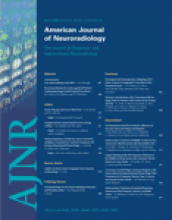Abstract
PURPOSE: The purpose of this study was to evaluate whether interactions between intracranial cerebral saccular aneurysms and the perianeurysmal environment (PAE), in the form of contact constraints, influence aneurysm shape and risk of rupture.
METHODS: A total of 190 consecutive aneurysms during a 34-month period were retrospectively analyzed. Of these, 124 were ruptured (group 1) and 66 were unruptured (group 2). Pretreatment high-resolution CT angiography was available for each aneurysm and was the determinant inclusion criterion. Aneurysm size and location, type of hemorrhage, initial Glasgow Coma Scale rating, World Federation of Neurological Societies grade, Fisher grade, and presence of concomitant aneurysms were recorded. Contact constraints between aneurysms and anatomical structures of the PAE were identified for each aneurysm and further subdivided into balanced or unbalanced depending on whether contact constraints occurred symmetrically on the aneurysm wall. Regular or irregular shape was recorded and correlated to contact constraints.
RESULTS: Compared with unruptured aneurysms, ruptured aneurysms were found to be larger and more irregular, to develop more contact constraints with the PAE, and to show higher rates of unbalanced contact constraints. Ruptured aneurysms had a tendency to be found in locations of a constraining PAE. Irregular shape was positively correlated with the presence of an unbalanced contact constraint, even in the absence of obvious contour deformations from an imprint of an adjacent structure.
CONCLUSION: The existence of contact constraints between intracranial saccular aneurysms and the PAE were shown to influence shape and risk of aneurysm rupture. Modifications of wall shear stress by contact constraints are discussed. Analysis of contact constraints between aneurysm and the PAE could be considered additional parameters in the assessment of risk of aneurysm rupture.
- Copyright © American Society of Neuroradiology












